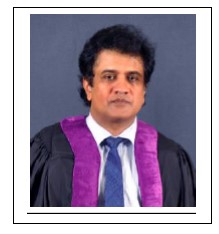Thoracoscopic sympathectomy by Prof KB Galketiya
Source: Newsletter of the College of General Dental Practitioners of Sri Lanka

Division of the thorasic ganglia of the sympathetic chain is done for following indications
Hyperhydrosis
Sympathetic dystrophy
Buergers disease
In these situations 2nd to 4th thorasic ganglia are removed. Caution is required to preserve the Stellate ganglion in order to prevent Horners syndrome.
This procedure used to be done by open surgery via neck or axilla. However at our institute we perform this using thoracoscopy. With minimal access approach the morbidity is reduced. In addition with thoracoscopy only up to second ganglion is visualized protecting the Stellate ganglion.
Recently two patients with a cardiac arrhythmia were recently referred for symathectomy to denervate heart. In this situation it was necessary to remove supply from Stellate ganglion as well. In order to prevent Development of Horners syndrome dissection was continued along sympathetic chain and lower half of Stellate ganglion was divided.
Thoracoscopic sympathectomy is performed under general anaesthesia. Conventionally lung collapse to obtain space for dissection is obtained by using a double lumen endotracheal tube and one lung ventilation. However as there are problems associated with placing a double lumen tube we use a more convenient and safe technique. We provide ventilation using a single lumen and obtain a lung collapse by a capnothorax. We have studied this and found using an insufflation pressure of 6-8Hgmm is safe and effective. Surgery is done in a semi-prone or full prone position. This position allows the collapsed lung to fall away from posterior mediastinum.








No Comments